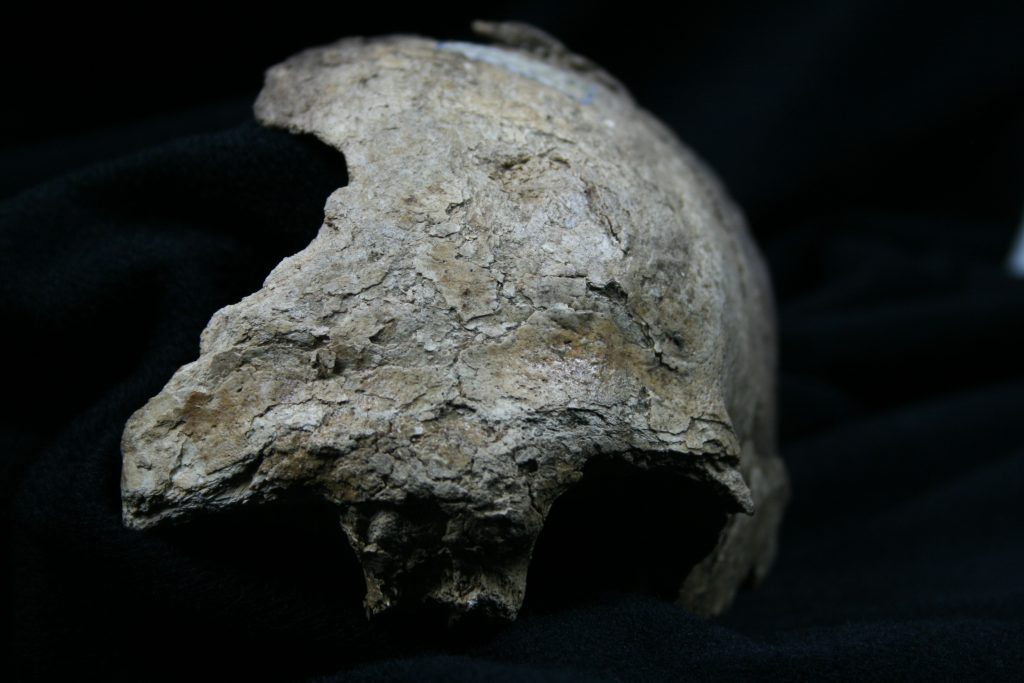The nature and organisation of society in the Neolithic period is little understood. We do not, for instance, even know how many people lived in Scotland during that time. Renfrew (1973, 149) used a calculation of, ‘two to twenty acres of effective arable land per head’ to suggest the population of Neolithic Arran was between 600 and 1200, and that of Rousay less than 650. (Renfrew acknowledged these figures looked high.) Around the same time as Renfrew made these calculations, Brothwell (1971, 79) suggested that the population of the British Isles as a whole in the Neolithic was between 10,000 and 40,000, probably a little low. Such calculations, based on mortuary data and / or available arable land result in widely varying figures and are based only on partial data and good deal of guesswork. Recently, Darvill (2010, 124) has suggested a reasonable population figure for the British Isles in the Neolithic would have been something in the order of 200,000; perhaps at this stage then it is safest to say the population of Scotland at this time would probably have numbered in the tens of thousands. Yet this may not have remained static. Models of population levels in LBK Europe have been constructed using analysis of the distribution and quantity of radiocarbon dates (Shennan & Edinborough 2007). This suggests a rapid increase of population with the arrival of farming, followed by a plateau, then collapse. This study concludes that ‘radiocarbon dates can be used as proxies for population history’ (ibid, 1344), and there is potential for such analysis (but perhaps with very different results) for Scotland. There is a general sense population increased throughout the Neolithic (cf. Ashmore 1996, 42) which is more of an assumption than a tested scenario. Great communal monumental projects could attest to this, but declining settlement and burial evidence does not support this hypothesis, and so the jury remains out on this, as with most population issues.

Figure 90: One of five crania from the Orcadian chamber tomb of Cuween Hill. © R Crozier
How was society organised? There is a general assumption that the basic unit of society was kin-based, with, for instance, families inhabiting one building. The floor spaces of Neolithic houses in Ireland suggest they could have accommodated a ‘family size’ group of perhaps 5–12 people (Grogan 2002, 520). Larger communal buildings (from Balbridie to Barnhouse) suggest gatherings of these small groups rather than huge domestic units (and see Theme 4). The wider organisation of these groups is unclear. There has long been a general view of Neolithic society as having some kind of ‘tribal’ basis, although what this meant in reality is unclear, and nowadays the less loaded (but fuzzy) terms ‘communities’ or ‘small-scale group’ are favoured. Generally, family is viewed as the basis for community identity and cohesion (where this is even discussed, which is rarely and superficially, usually with some anthropological or ethnographic model in mind). Some sense of hierarchy is hinted at by selective deposition of human remains in tombs and barrows, the notion of a ‘directing mind’ behind monument construction and perhaps also the control, or procurement, or resources. An enduring model in this context is that of territories, with certain parcels of land ‘belonging’ to different groups. This idea was fleshed out by Renfrew (1973) who argued that chambered tombs were indicators of territoriality on Arran and Rousay, with each ‘community’ having one chambered tomb and access to a series of key coastal and inland resources. This model has been much criticised, but not adequately replaced. Renfrew suggested a chiefdom model of social hierarchy for the Neolithic of Britain. Arguments for a shamanic or priest-like ruling class (e.g. MacKie 1977) are difficult to sustain. By way of contrast, the ‘communal’ nature of early Neolithic burials is often taken as evidence for an egalitarian society (although not everyone was buried in this way). In sum, until towards the end of the Neolithic, there is ‘very little evidence for ranking’ (Darvill 2010, 124).

Figure 91: Drill holes identified on a fragment of sternum from the Orcadian chamber tomb of Quanterness, Mainland. While their purpose is unclear, they suggest a complex relationship between the living and the dead. © R Crozier
In Scotland there are hints of ranking (e.g. in the use of jet and jet-like jewellery during the Early and Middle Neolithic); and in Late Neolithic Orkney, a highly hierarchical, theocratic society appears to have existed, with diverse symbols of power in use (including various styles of macehead).
Outstanding research questions:
- What was the population of Scotland in the Neolithic, how were people distributed, and how did this change through time?
- Can evidence for kin-based organisation of society be extrapolated from human remains?
- Who were the people whose remains were sealed under non-megalithic long and round barrows during the Early Neolithic? Were they special members of the community?
